Creating the perfect underwater environment for your aquatic pets involves more than just choosing the right tank and decorations. Proper lighting plays a crucial role in the health, behavior, and overall appearance of your fish. Different species have evolved in various aquatic habitats around the world, each with unique lighting conditions. From the bright, sun-drenched coral reefs to dimly lit Amazonian blackwaters, understanding your fish’s natural lighting preferences can make the difference between a thriving aquarium and one where inhabitants merely survive. This comprehensive guide will help you navigate the sometimes confusing world of aquarium lighting, ensuring your underwater friends receive exactly what they need to flourish in your care.
Understanding Aquarium Lighting Basics
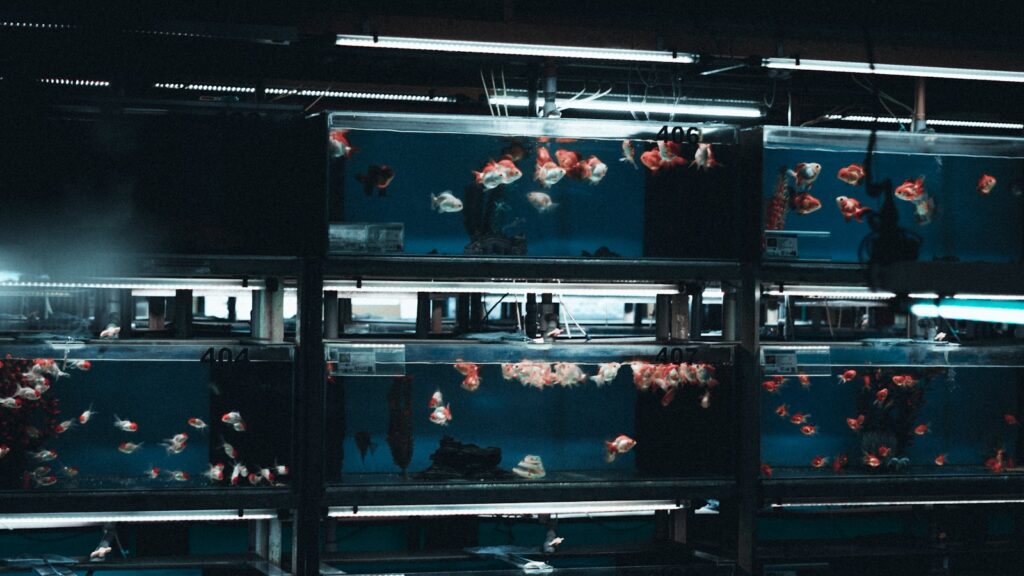
Aquarium lighting serves multiple purposes beyond simply illuminating your tank for viewing pleasure. For many fish, lighting regulates their biological rhythms, affecting everything from feeding behavior to breeding cycles. Light intensity is measured in lumens or PAR (Photosynthetically Active Radiation) values, while color temperature is measured in Kelvins (K), typically ranging from 2700K (warm yellow) to 20000K (blue-white) for aquarium use. Modern aquarium lights primarily use LED technology, which offers energy efficiency, customizable spectrums, and longevity benefits over older fluorescent or incandescent options. Understanding these fundamentals allows you to make informed decisions when selecting lighting for specific fish species and creates a foundation for more advanced lighting setups as your aquarium hobby develops.
Natural Habitat Considerations
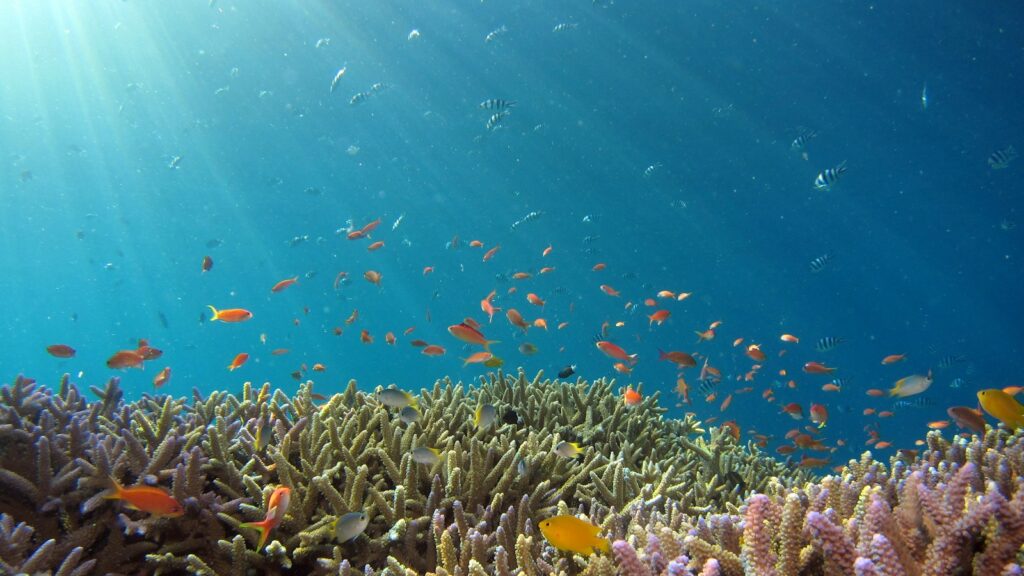
Replicating a fish’s natural lighting environment is key to reducing stress and promoting natural behaviors in captivity. Fish from clear, shallow waters near the equator, such as many reef-dwelling species, have evolved under intense, full-spectrum sunlight that penetrates deeply into their habitat. Conversely, species from blackwater environments like the Amazon basin are accustomed to heavily filtered, dim lighting due to tannins in the water that absorb blue light and create a reddish-brown tint. Asian stream and river fish often experience dappled, moderate lighting filtered through overhanging vegetation. Understanding these natural conditions provides essential context for selecting appropriate lighting intensity, duration, and spectrum for your specific fish species, creating a more authentic and comfortable environment that reduces stress and encourages natural behaviors.
Lighting for Tropical Community Tanks

Community tanks housing a variety of tropical freshwater species typically benefit from moderate lighting that satisfies the needs of a diverse collection. A color temperature between 6500K-7500K closely mimics natural sunlight and provides a balanced, pleasing appearance that showcases your fish’s colors without causing stress to more light-sensitive species. For a standard community tank, aim for approximately 1-2 watts per gallon using LED lighting, or around 40-50 lumens per liter. Maintain a consistent photoperiod of 8-10 hours daily to establish stable day-night cycles for your fish, using timers to ensure consistency even when you’re away from home. This balanced approach works well for popular community species like tetras, rasboras, gouramis, and peaceful barbs, allowing them to display natural behaviors while remaining comfortable in their environment.
Cichlid-Specific Lighting Requirements

Cichlids from different regions require tailored lighting approaches to match their natural habitats. African cichlids from Lake Malawi and Lake Tanganyika evolved in crystal-clear, sunlit waters and thrive under bright lighting with color temperatures between 8000K-10000K that accentuate their vibrant colors and simulate their natural environment. By contrast, South American cichlids like discus and angelfish come from more shaded Amazonian waters and prefer subdued lighting around 5000K-6500K with moderate intensity to prevent stress. Central American cichlids generally prefer intermediate lighting conditions. For all cichlids, creating areas of shadow using floating plants or carefully positioned decorations allows them to seek comfort in different light levels as needed, mimicking the varied light conditions they would experience in nature.
Goldfish and Cold Water Species

Contrary to popular belief, goldfish and other cold-water species benefit from thoughtful lighting rather than the harsh, unfiltered light they’re often subjected to in small bowls. These fish thrive under moderate lighting with a color temperature between 5000K-6500K, which enhances their metallic scales and vibrant colors without causing undue stress. Since their natural habitats include ponds and slow-moving rivers with varying light levels, providing a photoperiod of 8-10 hours with a gradual transition using timer-controlled dimming features helps maintain their natural biological rhythms. When keeping fancy goldfish varieties with protruding or bubble eyes, take special care to avoid overly bright lighting that might cause eye strain or discomfort for these selectively bred features. Creating partially shaded areas with floating plants like water lettuce or frogbit allows these fish to regulate their own light exposure.
Lighting for Nocturnal and Shy Species
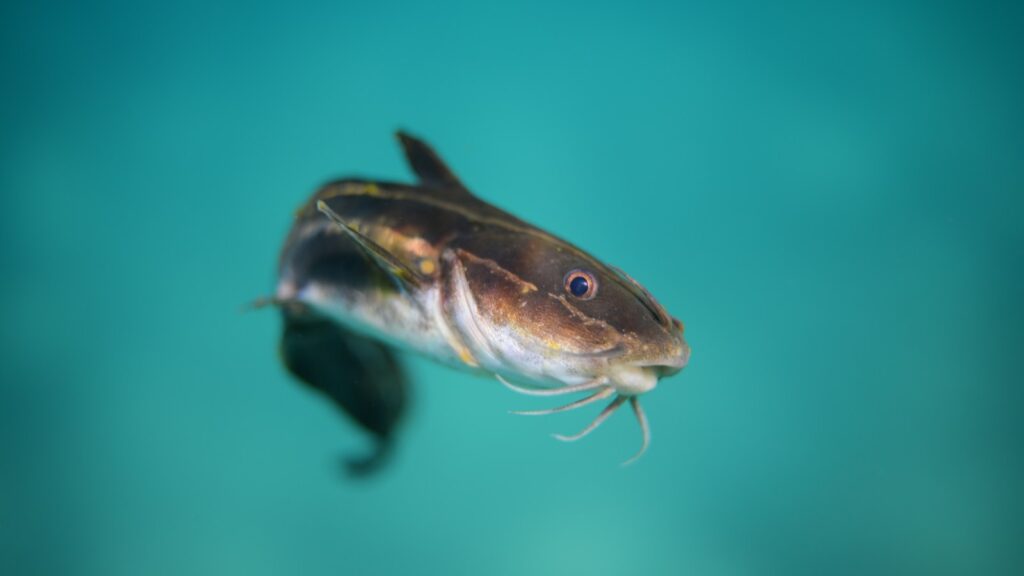
Nocturnal fish species like many catfish, knifefish, and certain loaches have evolved to be active primarily during darkness and can become stressed under bright lighting conditions. For tanks housing these species, subdued lighting with a color temperature around 4000K-5000K creates a gentle environment that won’t overwhelm their light-sensitive eyes while still allowing plant growth and observation. Consider implementing moonlight LEDs or specialized night lighting with blue or red hues that permit observation during their active hours without disrupting their natural behaviors. Creating numerous hiding spots with caves, driftwood, and dense planting further helps these species feel secure during daylight hours. A gradual transition between day and night lighting using programmable controllers can prevent shock from sudden light changes, more closely mimicking the gentle transitions these species would experience in nature.
Reef Fish and Marine Lighting

Marine fish from coral reef environments have evolved under some of the most intense and spectrum-rich lighting conditions on the planet, requiring specialized lighting solutions in captivity. High-intensity LED fixtures with color temperatures between 12000K and 20000K best replicate the blue-dominant light that penetrates clear tropical waters, bringing out the stunning fluorescent colors many reef fish display. For a reef tank with both fish and corals, aim for PAR values between 150 and 300 at the depth where your fish typically swim, with higher values necessary for light-demanding coral species. Include programmable lighting schedules that mimic sunrise and sunset, with dedicated actinic blue channels that enhance the fluorescent proteins in both fish and corals. Modern marine lighting systems often incorporate multiple spectrum channels allowing customization for specific reef zones your fish may have originated from, whether shallow Indo-Pacific reefs or deeper Caribbean habitats.
Lighting for Breeding Success
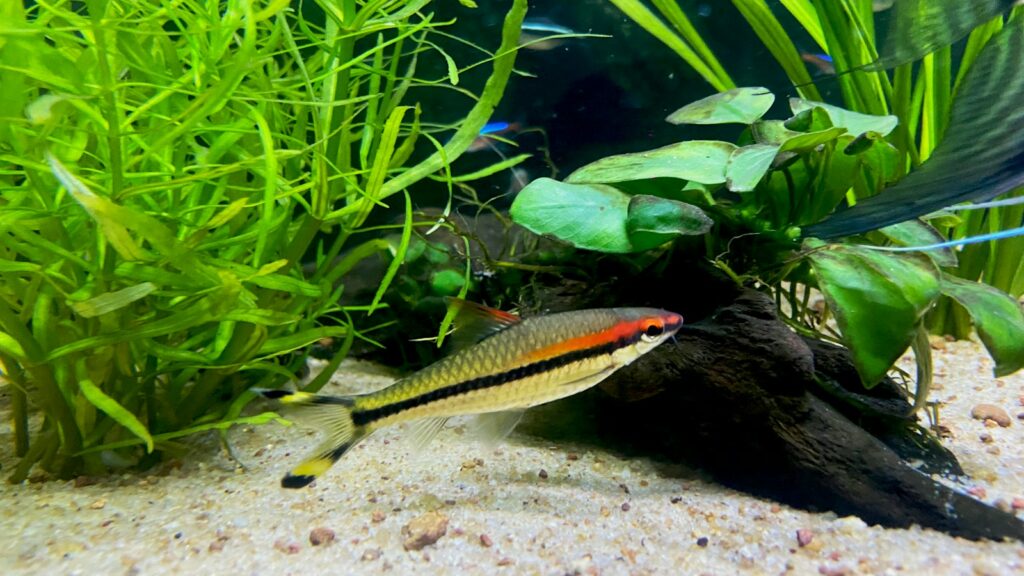
Many fish species rely on specific lighting conditions to trigger breeding behaviors and ensure successful reproduction. For seasonal breeders like many tetras and barbs, gradually increasing light duration and intensity can simulate the transition to rainy seasons that often trigger spawning in nature. Species like killifish and some cichlids respond well to including specific light spectrums – particularly in the red range – which can stimulate breeding displays and courtship behaviors. During egg development and fry rearing, use subdued lighting to reduce stress on sensitive young fish while still allowing them to locate food and develop properly. Some breeders have found success using specialized breeding lights that enhance specific wavelengths known to stimulate reproductive hormones in particular species, though more research in this area continues to emerge with advances in LED technology.
Plant-Compatible Fish Lighting

Creating a harmonious planted aquarium requires balancing the lighting needs of both plants and fish, which sometimes present contradictory requirements. Most aquatic plants require higher light intensity and specific spectrums for photosynthesis, particularly in the red and blue wavelengths, which can sometimes stress light-sensitive fish species. Medium-light setups using 6500K-7000K LEDs providing 50-75 PAR at the substrate create an excellent compromise for many community tanks, supporting moderate-light plants while keeping fish comfortable. For tanks with shadow-loving fish but light-hungry plants, consider implementing a strategic aquascape with tall background plants receiving higher light intensity while creating shaded areas beneath for fish to retreat to. With densely planted tanks, the plants themselves will create natural light gradients, mimicking the dappled lighting conditions many fish species encounter in nature.
Preventing Algae Problems with Proper Lighting

Balancing effective fish lighting with algae prevention requires understanding how light duration, intensity, and spectrum affect algae growth in your aquarium. Excessive lighting duration is often more problematic than intensity, making a consistent 8-10 hour photoperiod ideal for most setups rather than extended lighting periods that fuel algae proliferation. Implementing a midday break by programming lights to turn off for 1-2 hours during peak daylight can disrupt algae’s photosynthetic cycle while having minimal impact on fish and plants. Certain wavelengths, particularly in the green spectrum, are less utilized by higher plants but readily absorbed by many algae species, making full-spectrum lights with controllable channels preferable for fine-tuning your tank’s light profile. Remember that proper lighting is just one factor in algae control; maintaining appropriate nutrient levels, adequate filtration, and consistent maintenance routines work together with lighting management to create a balanced, algae-resistant environment.
Smart Lighting Technologies for Fish Health
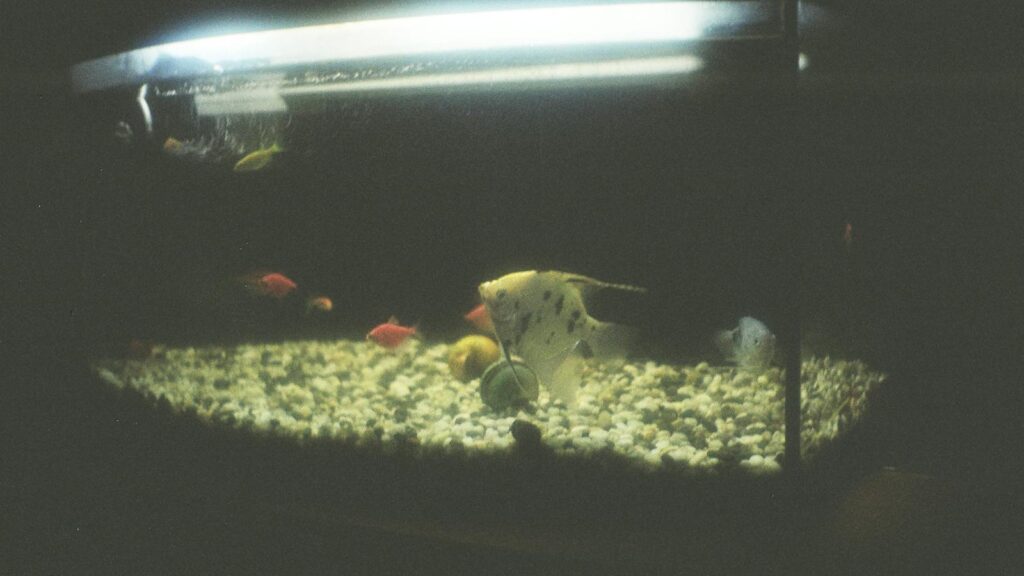
Modern aquarium lighting has evolved far beyond simple on/off cycles, with smart technologies now offering significant benefits for fish health and behavior. Programmable controllers enable the creation of dynamic lighting schedules that include gradual sunrise/sunset transitions, preventing the stress response many fish experience with sudden light changes. Cloud simulation features can mimic natural light variability, creating a more authentic environment that encourages natural behaviors and reduces the monotony that can contribute to stress in captive fish. Some advanced systems incorporate weather pattern simulations, including storm modes with reduced light and even thunder sounds, which can trigger breeding behaviors in species that spawn during rainy seasons. Remote monitoring capabilities allow aquarists to maintain optimal lighting conditions even when away from home, ensuring consistency that contributes to overall fish health and stress reduction in the aquarium environment.
Budget-Friendly Lighting Solutions
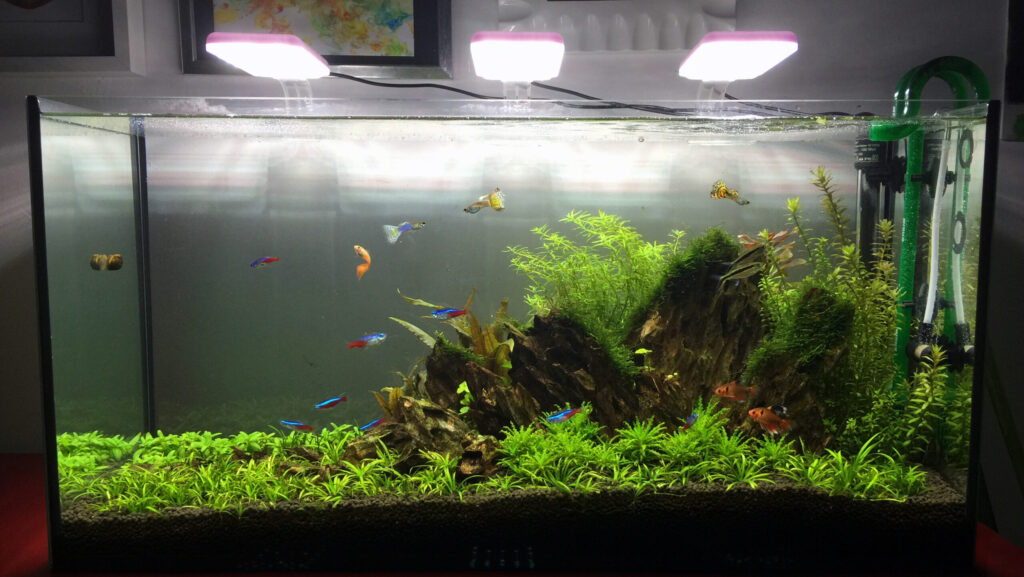
Creating appropriate lighting for your fish doesn’t necessarily require expensive, high-end equipment, especially for beginner or standard community setups. Entry-level LED light strips with basic daylight spectrums (around 6500K) provide adequate illumination for most common freshwater fish while costing significantly less than programmable systems. For small tanks under 20 gallons, clip-on LED fixtures provide focused, energy-efficient lighting that can be positioned to create both well-lit and shaded areas for fish comfort. DIY lighting solutions, such as combining household LED fixtures with appropriate diffusers and timers, can create effective lighting at a fraction of specialized aquarium lighting costs. When working with budget constraints, prioritize reliable timers to maintain consistent photoperiods, as lighting consistency often matters more for fish health than having premium features or the highest light intensity available on the market.
Monitoring and Adjusting Your Lighting System
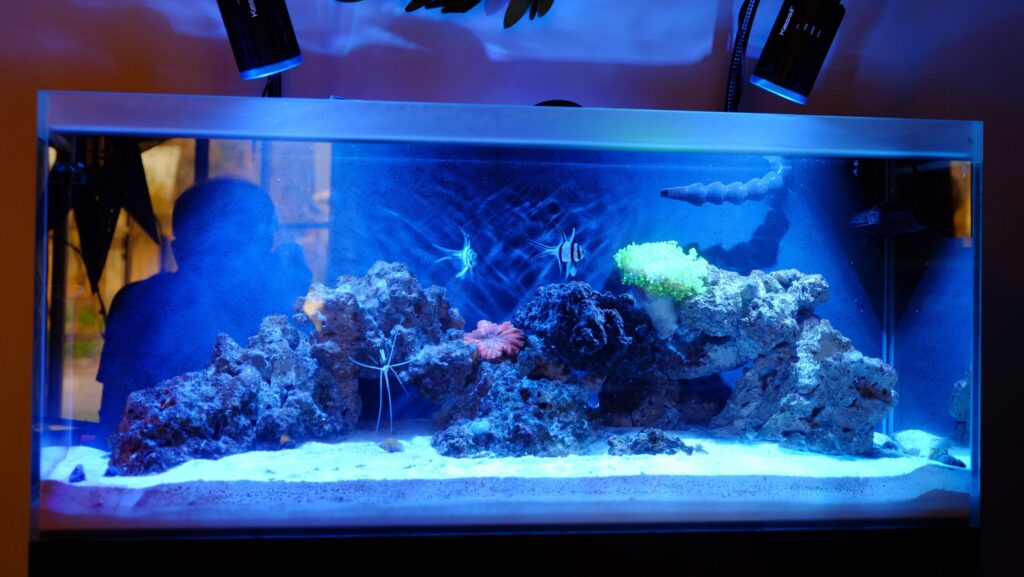
Successful aquarium lighting requires ongoing observation and willingness to make adjustments based on your fish’s responses and changing needs. Watch for behavioral signs that may indicate lighting issues, such as fish consistently hiding, showing faded colors, or gathering at the bottom of the tank during peak lighting periods, which often suggests the lighting is too intense or spectrally inappropriate. Invest in a basic PAR meter if possible, allowing you to measure actual light intensity at different depths in your aquarium rather than relying solely on manufacturer specifications. Seasonal adjustments that slightly reduce photoperiod during winter months and extend it during summer can help maintain natural biological rhythms, especially for temperate species. Remember that as bulbs age, their output diminishes, requiring periodic replacement or intensity adjustments even with long-lasting LED systems to maintain optimal conditions for your aquatic inhabitants.
In conclusion, selecting the right lighting for your aquarium fish involves understanding species-specific needs, natural habitats, and the delicate balance between fish comfort and other tank requirements such as plant growth. By thoughtfully approaching your lighting setup—whether using high-tech programmable systems or budget-friendly solutions—you create an environment where your aquatic pets can truly thrive rather than merely survive. Remember that observation is key; your fish will communicate through their behavior whether your lighting choices are appropriate. As you become more attuned to these signals, you’ll develop the expertise to create the perfect illuminated underwater world for whatever species you choose to keep.

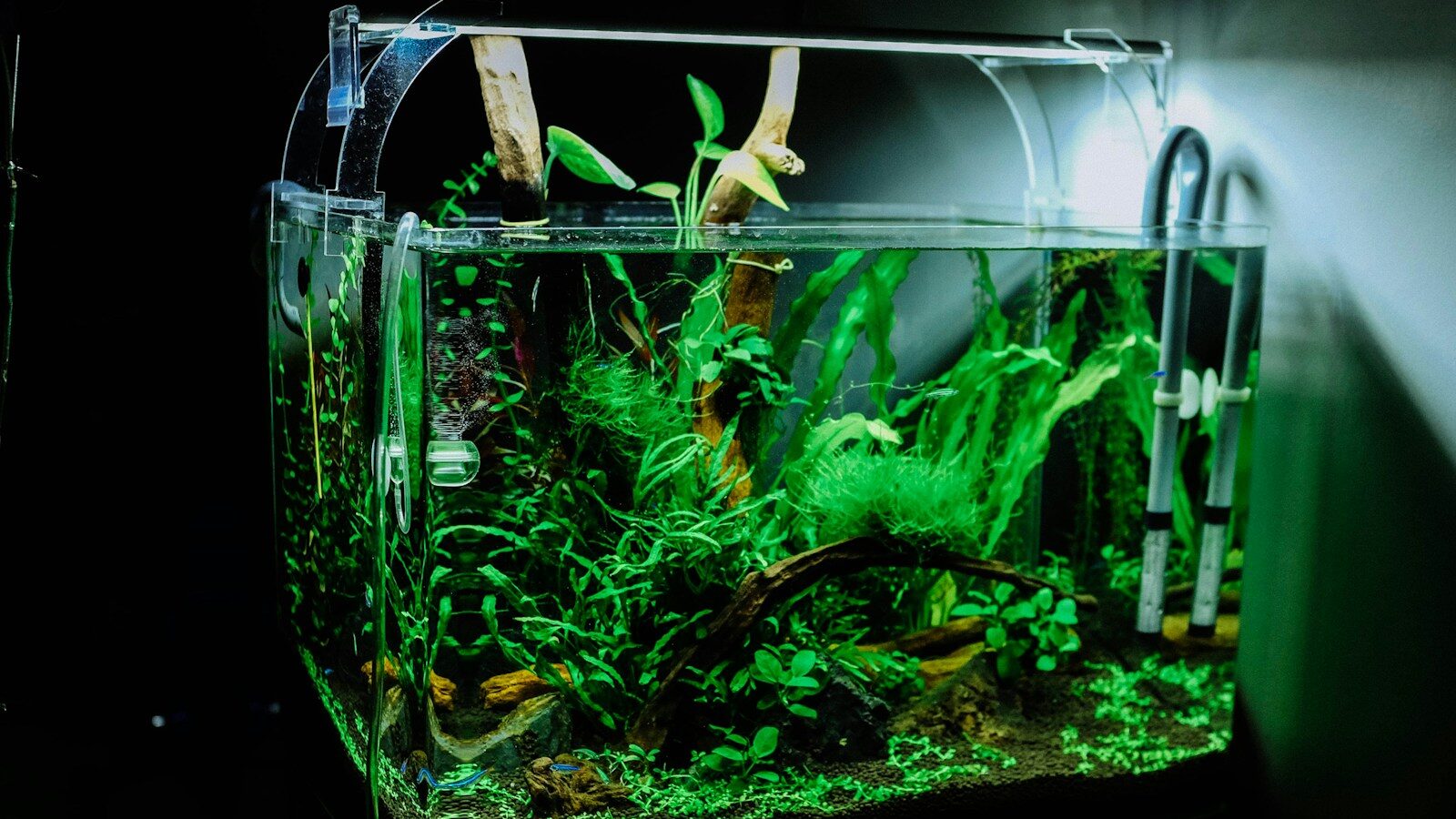
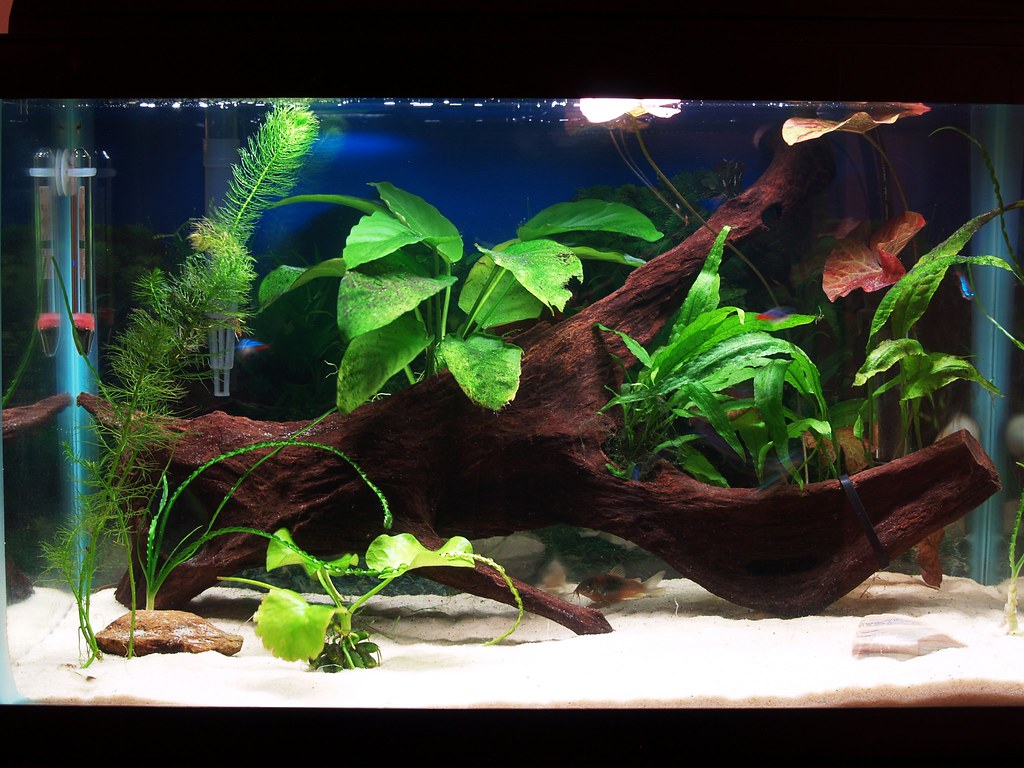
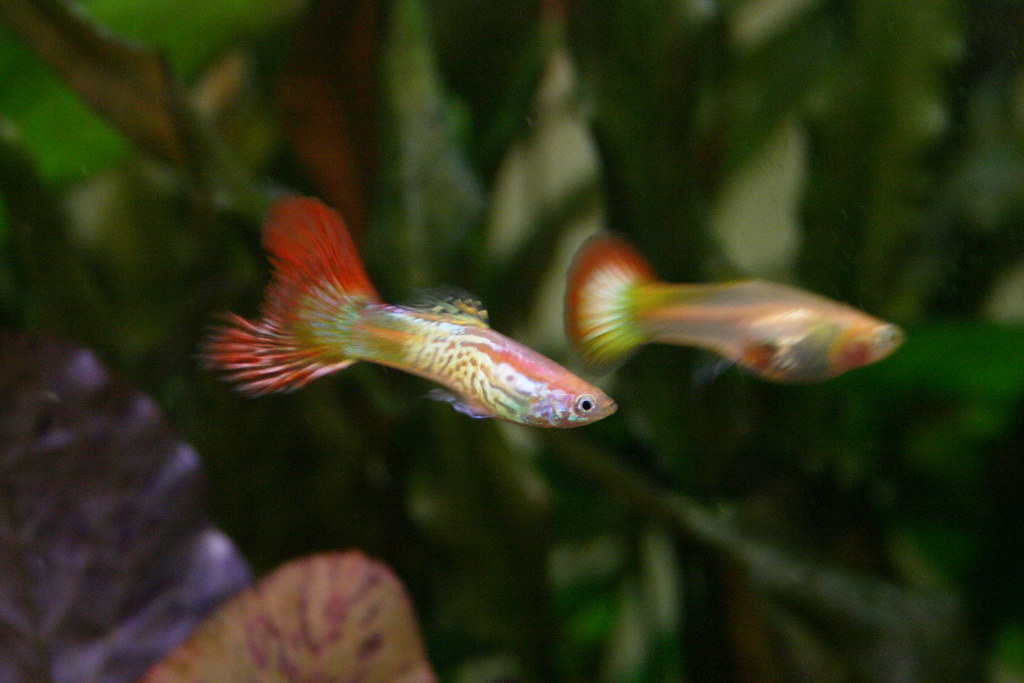


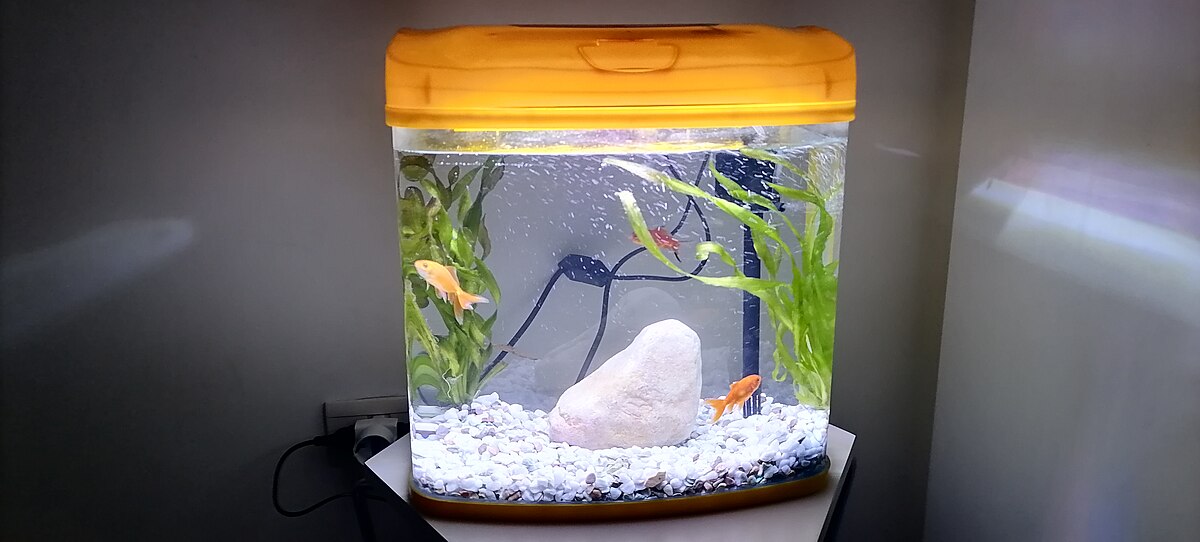
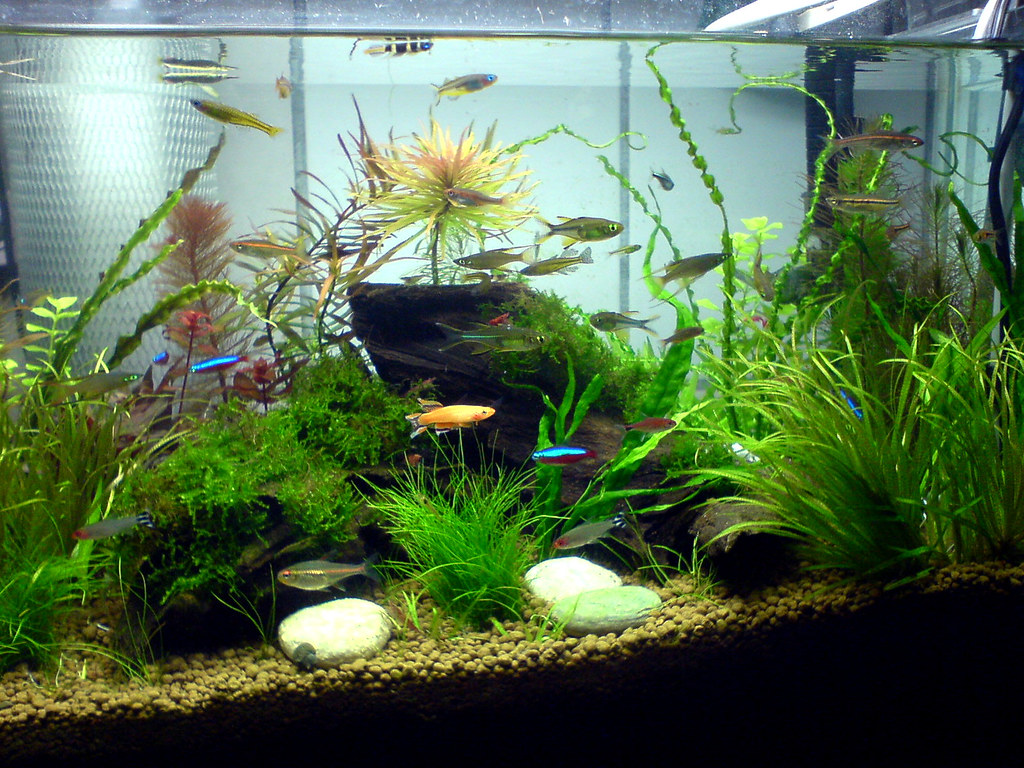
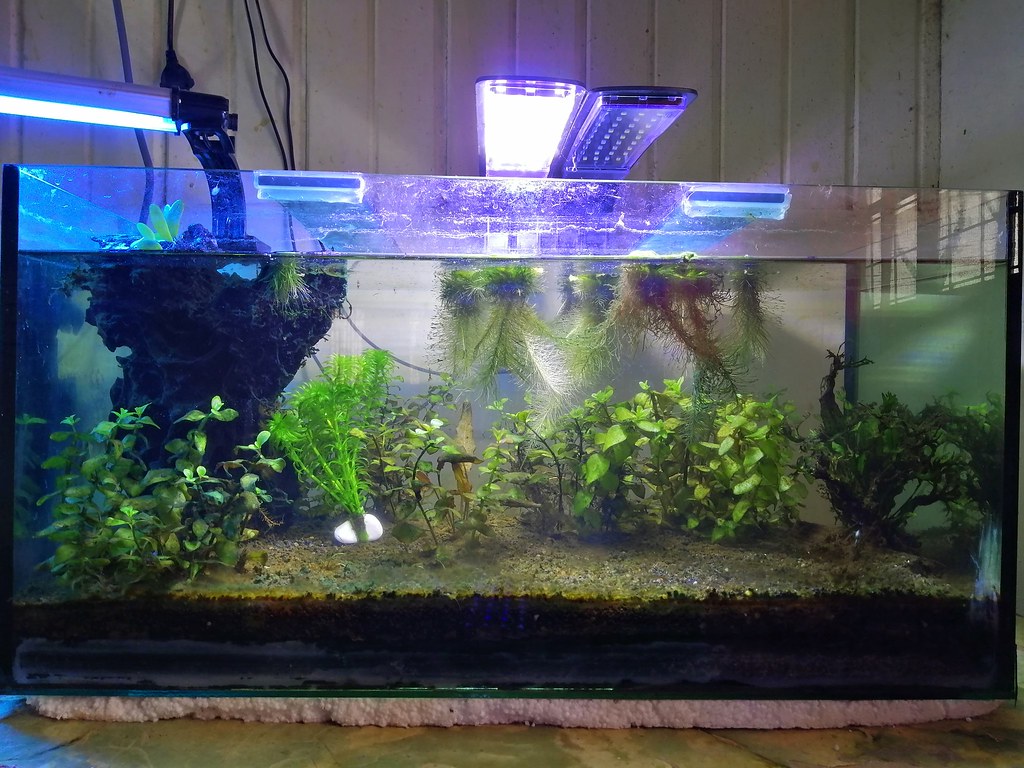
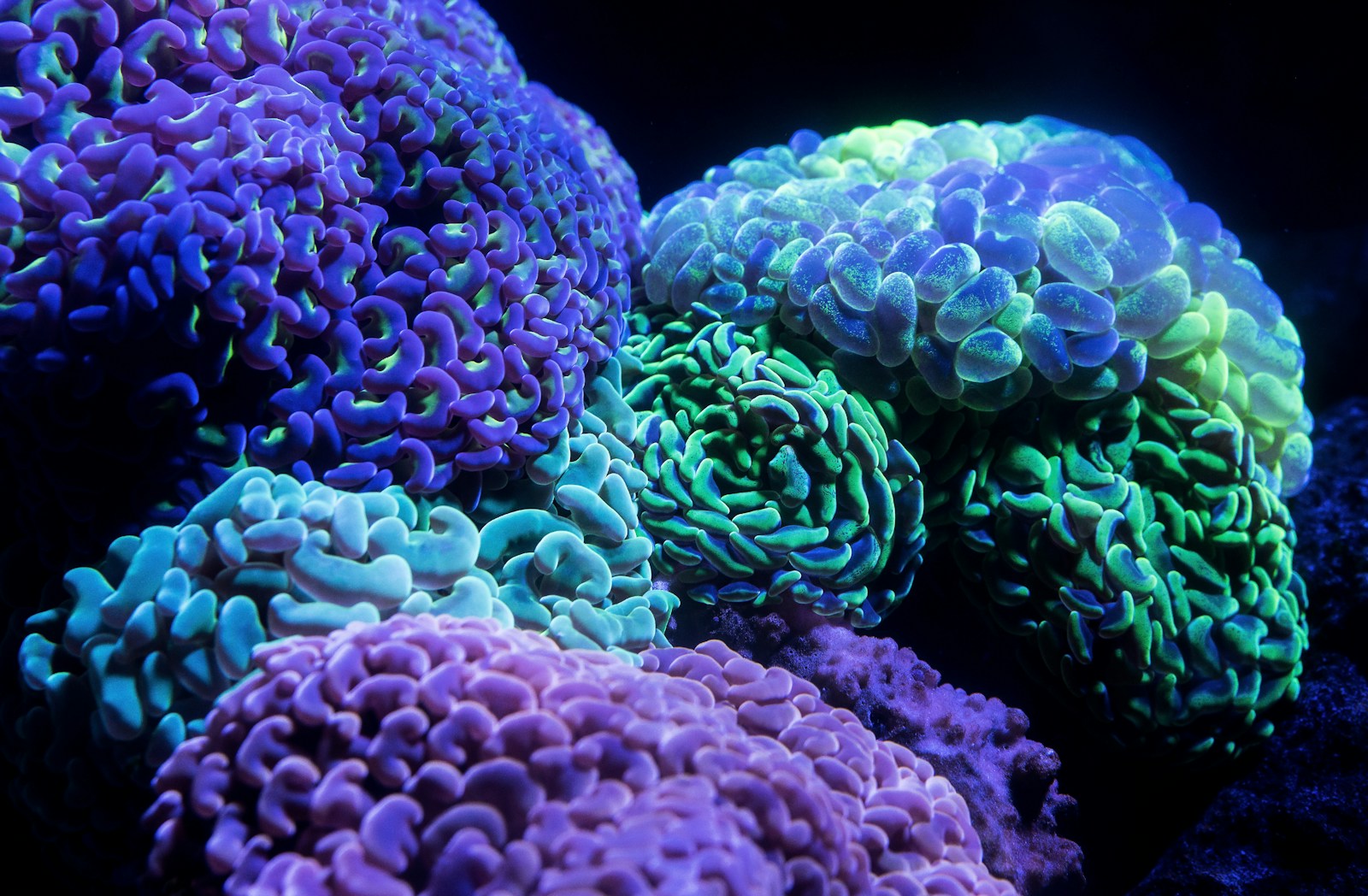






Leave a Reply